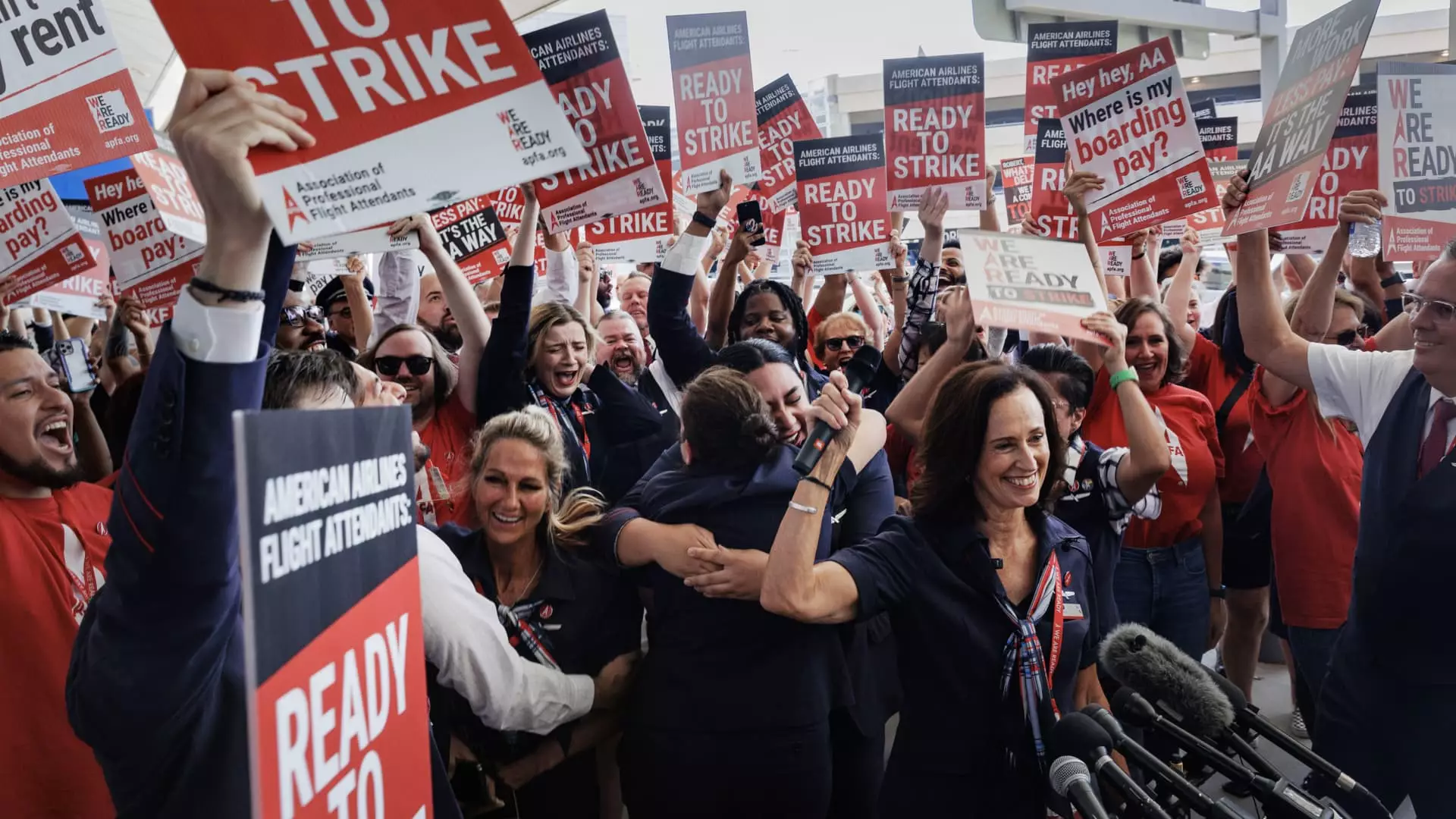The recent approval of a five-year labor contract by American Airlines flight attendants marks a pivotal moment in labor relations within the airline industry. With an overwhelming 87% of participating members in favor, the agreement brings an immediate wage increase of up to 20.5% effective from October, alongside significant retroactive pay to account for the extensive negotiations that spanned several months. This contract is not merely a financial achievement; it symbolizes a hard-won battle for industry acknowledgment and respect for flight crews who endured long hours and heightened challenges, particularly in the wake of the COVID-19 pandemic.
The union representing American Airlines’ roughly 28,000 flight attendants, the Association of Professional Flight Attendants, has heralded this agreement as a “significant milestone.” The contract has implications that extend beyond immediate compensation; it serves as a template for labor relations in a sector still grappling with the aftermath of a global crisis. Julie Hedrick, the union’s president, emphasized the importance of this contract in addressing not only wage concerns but also the broader context of work-rule enhancements that have become necessary in an evolving industry landscape.
American Airlines’ leadership, having previously considered potential strike actions from the flight attendants, will certainly breathe a sigh of relief after this agreement. The high-stakes negotiations witnessed the involvement of notable political figures, including Transportation Secretary Pete Buttigieg and Labor Secretary Julie Su, affirming the significance of this labor dispute on a national scale. Such investments in negotiations signal that labor dynamics are shifting, influenced by broader economic trends and the need for fair treatment of essential workers.
The Ripple Effect Across the Industry
This successful negotiation is not an isolated event; it reflects a wider movement among airline workers and beyond, who are increasingly demanding better compensation and job security. American Airlines is not alone in facing pressure; United Airlines continues to negotiate its own contract, while Alaska Airlines has recently seen its cabin crew reject a tentative deal. This period of labor unrest comes on the heels of substantial contract victories across various sectors, from automotive to entertainment, illustrating a collective push for enhanced working conditions and wages.
The mindset of workers in these industries is shifting, spurred by inflated living costs and a renewed awareness of labor rights. Current negotiations at Boeing, where tens of thousands of workers are considering a contract with substantial raises, further highlight the growing tide of employee activism. Political and public sentiment has increasingly shifted towards supporting workers’ rights, suggesting that this trend may only gain momentum in the foreseeable future.
The flight attendants’ contract with American Airlines represents more than just wage increases; it signals a new chapter in labor relations within the airline industry. The resolution of this dispute illustrates the power of collective bargaining and the necessity for fair treatment of workers who play a crucial role in the airline’s operations. As the industry continues to recover from past crises, the hope is that this contract will inspire similar victories in labor negotiations across the aviation sector, creating a more equitable landscape for all workers involved.

